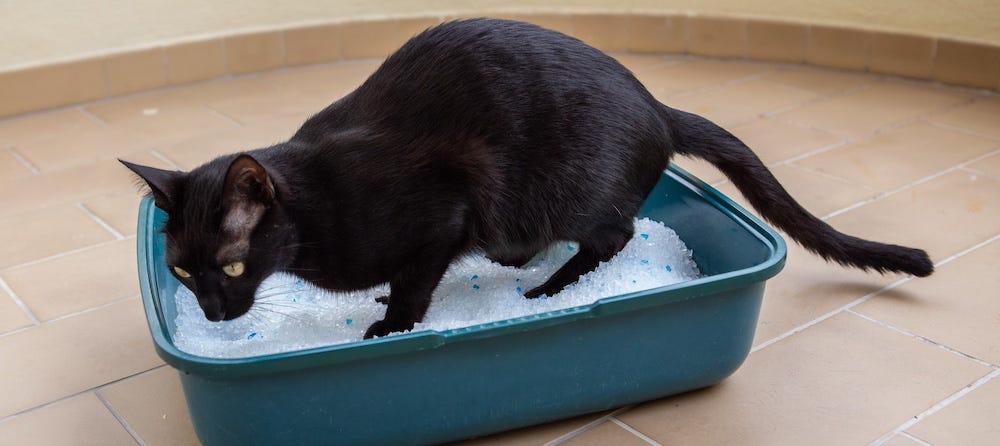As a veterinarian and cat parent, one of my MOST hated cancers in cats is squamous cell carcinoma, often abbreviated “SCC.” If your cat was just diagnosed with SCC, my heart goes out to you, as my own 19-year-old cat died of this aggressive oral cancer. Squamous cell carcinoma in cats is really hard to detect early, as it often hides in the back of the mouth. Here’s what you need to know about SCC in cats, including what signs to look for, what treatment options there are, and how to prevent it.
What is squamous cell carcinoma in cats?
Squamous cell carcinoma is the second most common cancer seen in cats, with lymphoma being the most common. While squamous cell carcinoma can grow anywhere, it commonly grows in or around a cat’s face or mouth—particularly the hairless areas. It often looks like an ulcerated, reddened, or even a cauliflower-like growth. The most commonly affected areas of SCC in cats includes:
- The pinnae (e.g., tips of the ears)
- The nasal planum (the soft part of the nose near the nostrils)
- Mouth
- Eyelids
- Tonsils
- Throat
My own cat had it in the back of his mouth. Even as a veterinarian, I had a hard time “spotting it.” That’s one of the reasons why I hate this cat cancer: Most cat parents don’t commonly look in their cat’s mouth, as cats resent being pilled or handled this way (as compared to dogs!).
Signs of squamous cell carcinoma in cats
Signs of SCC in cats include:
- Chewing at an unusual angle
- Dropping food from the mouth
- Licking the lips more
- Halitosis
- Decreased appetite
- Taking longer to eat
- Inability to close the mouth
- Drooling
- Pawing at the mouth
- Lip smacking more
- Weight loss
- Redness in the back of the mouth or gums
What signs of squamous cell carcinoma did I notice in my cat? My cat was licking his lips more after eating canned food, which prompted me to examine his mouth—I then found an oral mass in his mouth. I took him to the veterinary dentist the next day, where he was placed under general anesthesia for a biopsy and dental X-rays. Sadly, the dentist confirmed what I feared: SCC in the back of my cat’s mouth. I was shocked when the veterinary dentist only quoted me a 5-week survival. 5 WEEKS! Sadly, that’s almost exactly how long my cat survived, before I ended up having to humanely euthanize him.
How do you diagnose SCC in cats?
Squamous cell carcinoma is often confused with severe dental disease, and a biopsy is often necessary to diagnose it correctly. In order to biopsy the mass and get dental X-rays (to look for boney changes in the jaw or tooth sockets from the cancer), this typically has to be done under general anesthesia (versus sedation). Keep in mind that the biopsy then needs to be submitted in formalin to a laboratory for analysis, and results typically take 3-5 days.
Other tests that we’ll have to do include chest X-rays and blood work. X-rays are taken to make sure that there is no obvious cancer spread to the lungs or body, while blood work checks that the red blood cell count, white blood cell count, protein, and kidney/liver function is normal prior to general anesthesia.
What’s the treatment for SCC in cats?
Unfortunately, there aren’t a lot of good treatment options for squamous cell carcinoma in cats. Treatment will depend on how advanced it is. When in doubt, work with your veterinarian to get it rapidly diagnosed and treated, and consult with a veterinary oncologist or veterinary dentist for a second opinion on treatment options.
Surgical “debulking” (e.g., making the mass as small as possible) and simultaneous biopsy to confirm SCC are a first start, followed by pain medication, nutritional support, and supportive care.
Pain medication
For pain medication, I prefer to use a long-acting opioid injection (e.g., buprenorphine, Simbadol) while in the hospital. This lasts 24 hours but has to be given as a subcutaneous injection. At home, you can use a sublingual (under the tongue) medication every 6-8 hours for pain control. Another safe pain medication option is gabapentin. This typically comes as a liquid or capsule and can be given every 8-12 hours. The capsule dose is too large for a cat (typically 100 mg capsules), so this often needs to be compounded or dosed very carefully. Another pain medication is the use of a veterinary-approved, feline non-steroidal anti-inflammatory drug (NSAID), although I typically only use this short-term (a few days). Depending on how severe your cat’s SCC is, all three pain medications should be considered.
Nutritional support
For nutritional support, an appetite stimulant can be used. There are two types: an oral form and a transdermal form that you apply into the inside of your cat’s ear. This can help stimulate your cat to eat. I also like to provide tasty soft food, which will be easier for your cat to lap up. If your cat has a decreased appetite and isn’t eating well due to their SCC, my favorite cat treats to try include:
- Meat-based human baby food (e.g., Gerber turkey)
- Bonito tuna flakes
- Canned kitten food
- Prescription palatable canned food from your veterinarian (e.g., Science Diet a/d, Purina C/M, etc.)
- Canned tuna in water
- Shrimp
- Fish
- Inaba Churu pate
- Temptations treats
Please know that you should never force feed your cat. Not only does this make your cat resent you and run away, but it can rarely result in pneumonia, nausea, vomiting, and food aversion (e.g., turning away from food).
Supportive care
Lastly, your cat will be treated with symptomatic supportive care. Hospice support like giving your cat fluids under the skin and a long-acting antibiotic injection (to help rid any secondary bacterial infection of the growth) may also help initially.
Sadly, you’ll ultimately need to make the decision to humanely euthanize with your veterinarian. The mass will continue to grow and cause your cat discomfort, even difficulty breathing or swallowing. Talk to your veterinarian on when to consider humane euthanasia in your cat, as it’s a really hard—but loving—decision.
Having lost my own cat to this devastating cancer, my heart goes out to you if your cat was recently diagnosed with SCC. While 5 weeks is way too short as an average survival once diagnosed with SCC, I like to make sure that every day after the diagnosis of SCC in your cat is “icing on the cake.” Spoil your cat as much as you can, let them enjoy whatever food they can eat up, and take the time to love your cat up.
Can you prevent squamous cell carcinoma in cats?
Squamous cell carcinoma affects lightly pigmented cats more, like white-furred cats that spend more time outside in the sun. Damage to cells in the body—via physical trauma, excessive exposure to sunlight or smoke, or even chronic dental disease—is thought to play a role with this type of cancer. Keeping your cat indoors (especially if you have a white-furred cat and live in a constantly sunny location), avoiding smoking in the house or near your cat, and having routine veterinary examinations is a MUST! If caught early, this type of cancer is treatable. However, if the cancer progresses, it spreads to other parts of the body and dramatically affects quality of life.
Early recognition and treatment is imperative with SCC. So, it’s important that your cat gets an annual examination—especially as they become middle aged (approaching 7-10 years of age). Make sure your cat undergoes dental examinations, X-rays, and cleanings at a minimum of every few years due to the association between dental disease and SCC. The better we can take care of our cats’ teeth, hopefully, the lower the risk of SCC.
Cover photo by Martin Katler on Unsplash









